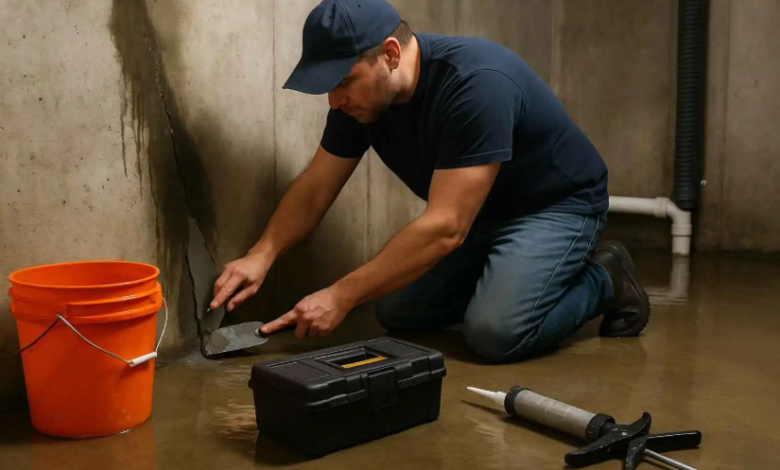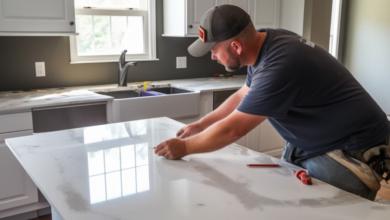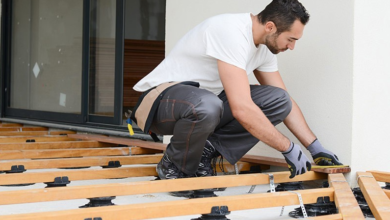Basement Leak Repair Essential Tips for Long-Lasting Solutions

A basement leak can cause serious damage to a home’s structure and create unhealthy conditions like mold growth. Addressing leaks promptly prevents further damage, protects belongings, and maintains the integrity of the foundation. The most effective way to repair a basement leak combines identifying the source, applying waterproofing techniques, and making targeted repairs to prevent future water infiltration.
Understanding the cause of the leak is essential for choosing the right solution, whether it involves sealing cracks, improving drainage, or installing a vapor barrier. Simple DIY fixes can work for minor leaks, but persistent or severe water problems often require professional intervention to ensure lasting results.
Repairing a basement leak is a manageable process if approached methodically. Proper diagnosis and timely action help safeguard the home and avoid costly future repairs.
Basement Leak Repair Methods
Basement leak repair involves multiple approaches to address water intrusion. These include sealing interior cracks, protecting the exterior structure, and managing water flow around the foundation. Each method targets specific causes and scenarios for leaks.
Interior Sealants
Interior sealants focus on stopping water once it has entered the basement. Common materials include hydraulic cement, epoxy, and polyurethane foam. Hydraulic cement is effective for plugging active leaks in cracks or holes because it expands as it cures, creating a tight seal.
Epoxy injections bond concrete and prevent moisture passage through cracks. Polyurethane foam can expand to fill voids and is resistant to water pressure. These sealants are typically applied to interior walls and floors after cleaning and drying the area.
This method is often a first step for small leaks or as a temporary fix. However, it does not address water pressure or drainage issues outside the foundation.
Exterior Waterproofing
Exterior waterproofing involves applying barriers to the outside of foundation walls to block water before it enters the basement. This usually requires excavation around the perimeter of the home to expose the foundation walls.
A waterproof membrane or coating is applied to the exterior walls. Materials like bituminous coatings, rubberized asphalt, or liquid-applied membranes are common. These create an impermeable surface that resists water penetration, protecting the foundation from hydrostatic pressure.
Additionally, exterior waterproofing may include applying a drainage board on top of the membrane to channel water away from the wall. This method is more permanent but requires significant labor and cost. It often works best when combined with proper drainage solutions.
See also: Aged Care Homes and Palliative Care: Understanding the Options
Drainage System Installation
Proper drainage systems remove water from around the basement foundation to reduce pressure and prevent leaks. The two most common systems are French drains and interior drainage channels.
A French drain is installed around the exterior foundation footings, directing water into a gravel-filled trench lined with perforated pipe. This pipe channels water away from the house, reducing buildup near the walls.
Interior drainage systems involve installing channels along basement walls or floors to collect water that enters. The water then drains into a sump pump system, which pumps it away from the home.
These systems work by addressing water at the source and are essential in preventing recurring leaks, especially in areas with high groundwater or poor soil drainage.
Causes and Prevention of Basement Leaks
Basement leaks often originate from structural issues or drainage problems around the home. Addressing leaks requires understanding their specific sources and ensuring effective measures to keep water out.
Common Sources of Basement Leaks
Leaks typically come from cracks in walls or floors, gaps around windows, and faulty plumbing. Water can seep through these openings when soil outside the basement retains moisture or during heavy rainfall.
Basement wall cracks may be visible or hidden behind insulation. Plumbing failures, like burst pipes or leaking sump pumps, also cause water intrusion. Identifying the source early is critical to avoid damage.
Common signs of leaks include:
- Damp spots or water stains on walls
- Musty odors indicating mold
- Standing water or puddles on the floor
Timely inspection helps determine whether a simple patch or major repair is necessary.
Foundation Cracks and Water Infiltration
Foundation cracks are primary points for water infiltration. Hairline cracks might allow small amounts of water, while larger cracks can lead to significant flooding.
Water pressure builds up from saturated soil outside. Without proper sealing, water forces its way inside. Repair involves cleaning the crack, injecting epoxy or polyurethane, and applying waterproof membranes.
Professional services sometimes excavate around the foundation to apply waterproof coatings. This process stops leaks more permanently but requires substantial labor and expense.
A solid foundation seal is crucial to prevent recurring issues caused by soil shifting and freeze-thaw cycles.
Proper Grading and Landscaping
Improper yard grading directs water toward the basement instead of away from it. The ground near the foundation must slope at least 6 inches over the first 10 feet away from the home.
Downspouts should extend several feet from the house to prevent water pooling near the foundation walls. Clogged gutters and poor drainage exacerbate leaks.
Landscaping choices like dense planting or compacted soil can hinder water absorption, increasing runoff. Designing landscape beds to channel water away and maintain soil porosity helps reduce basement moisture.
Regular inspection and maintenance of grading and drainage systems are effective first steps in preventing leaks.





